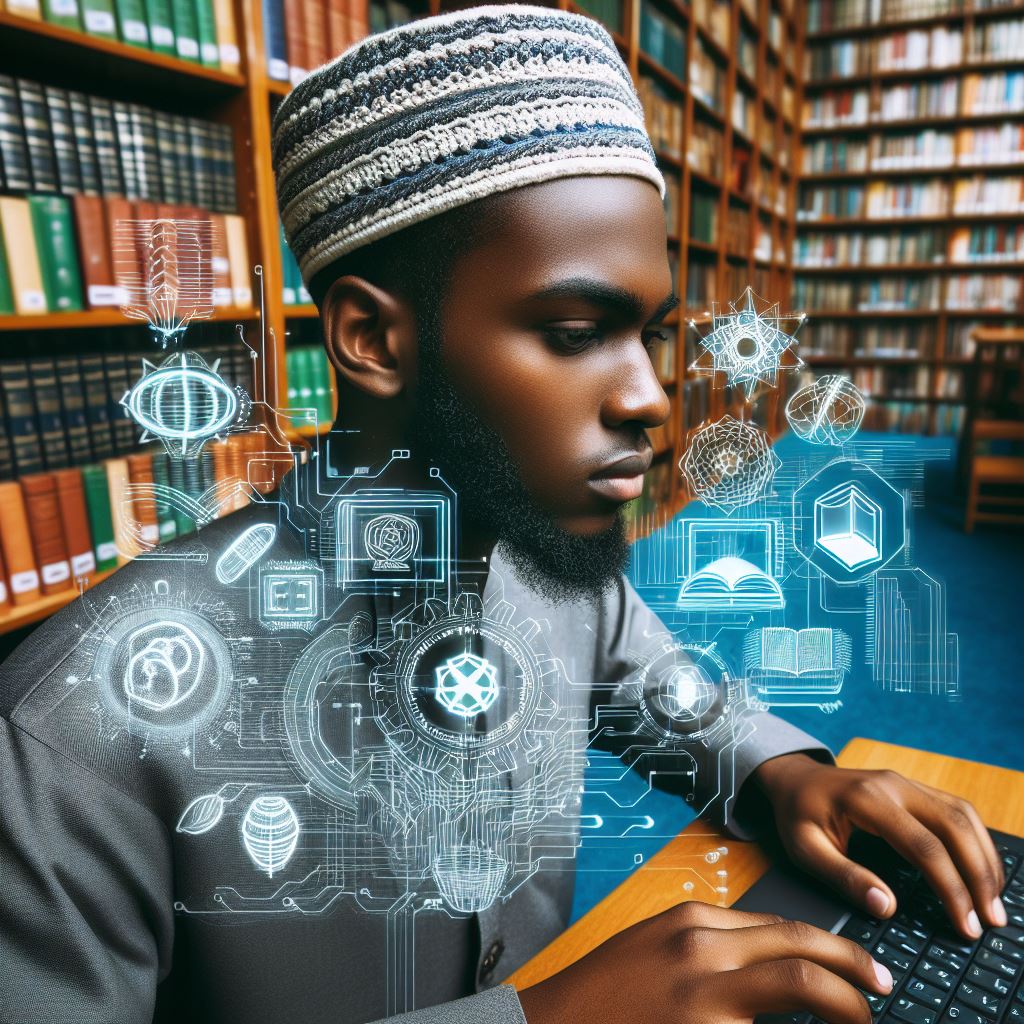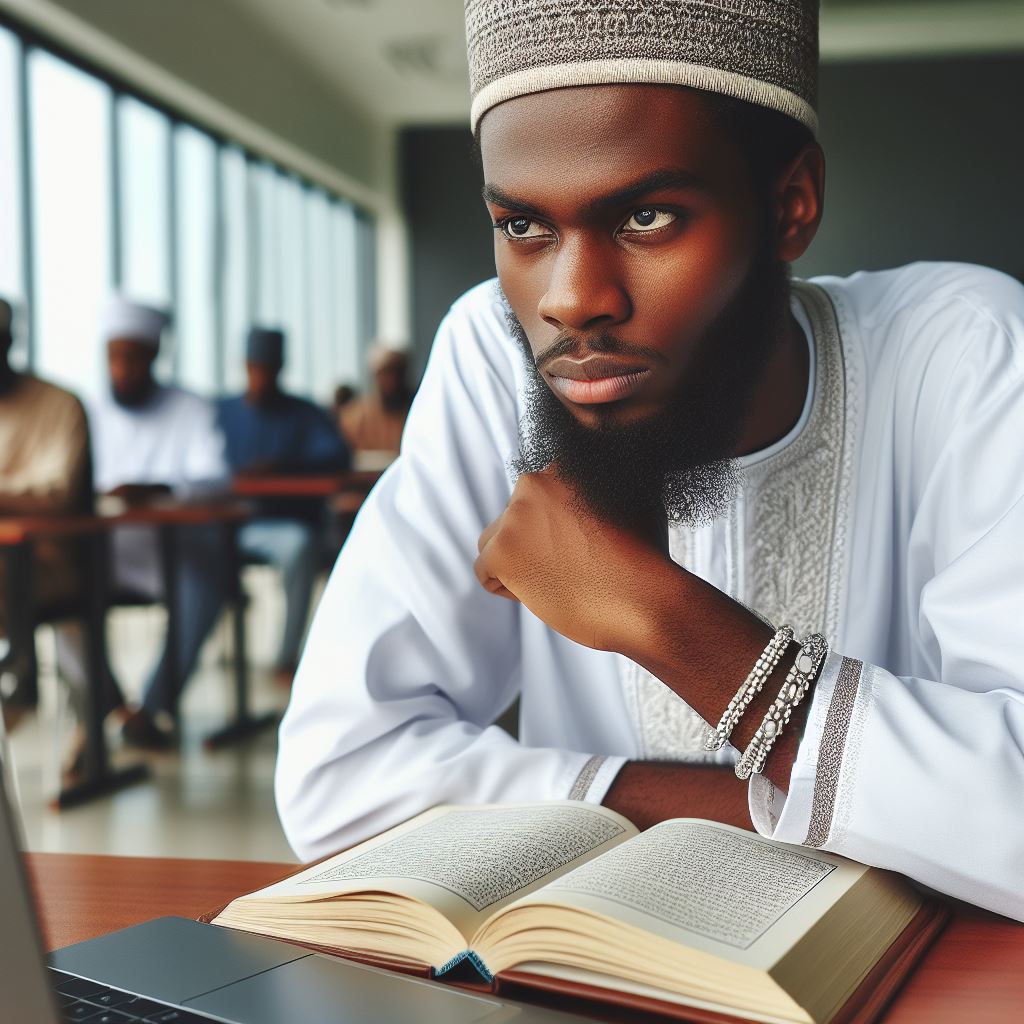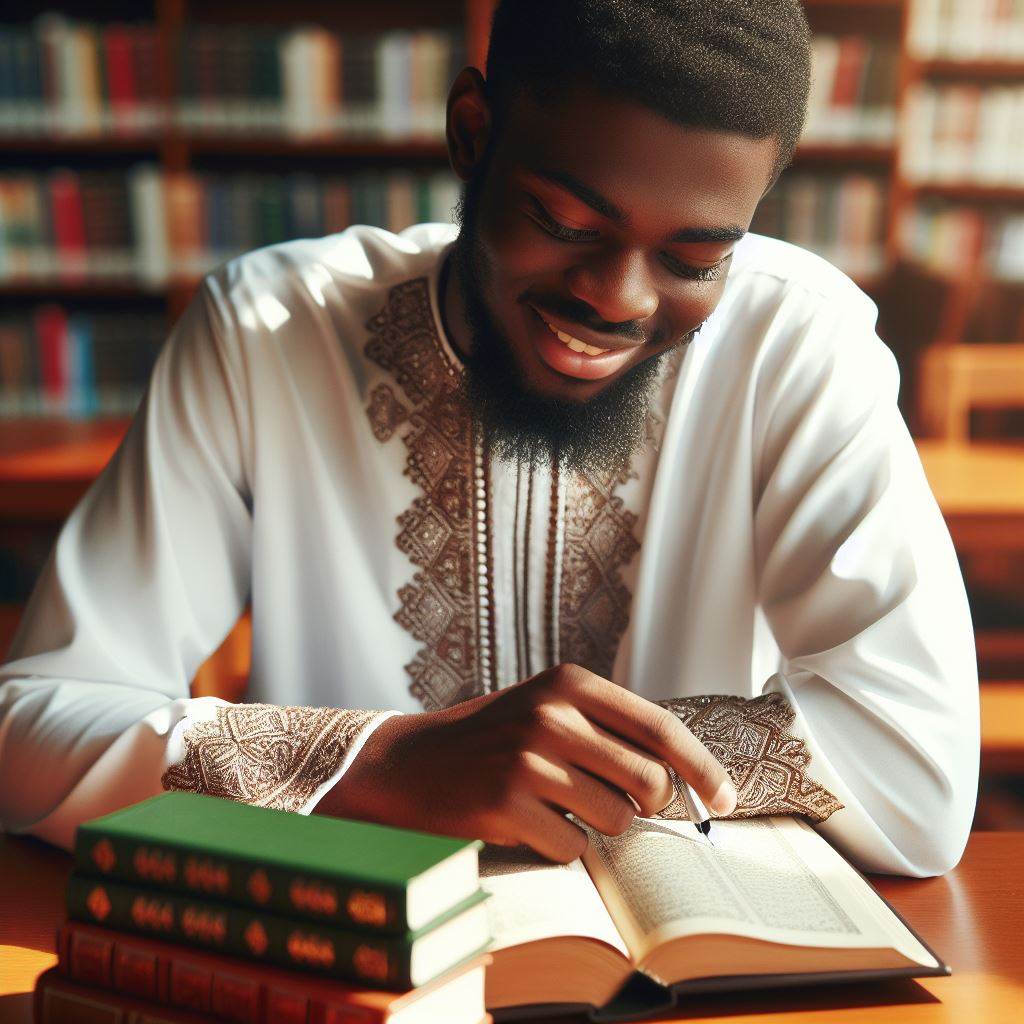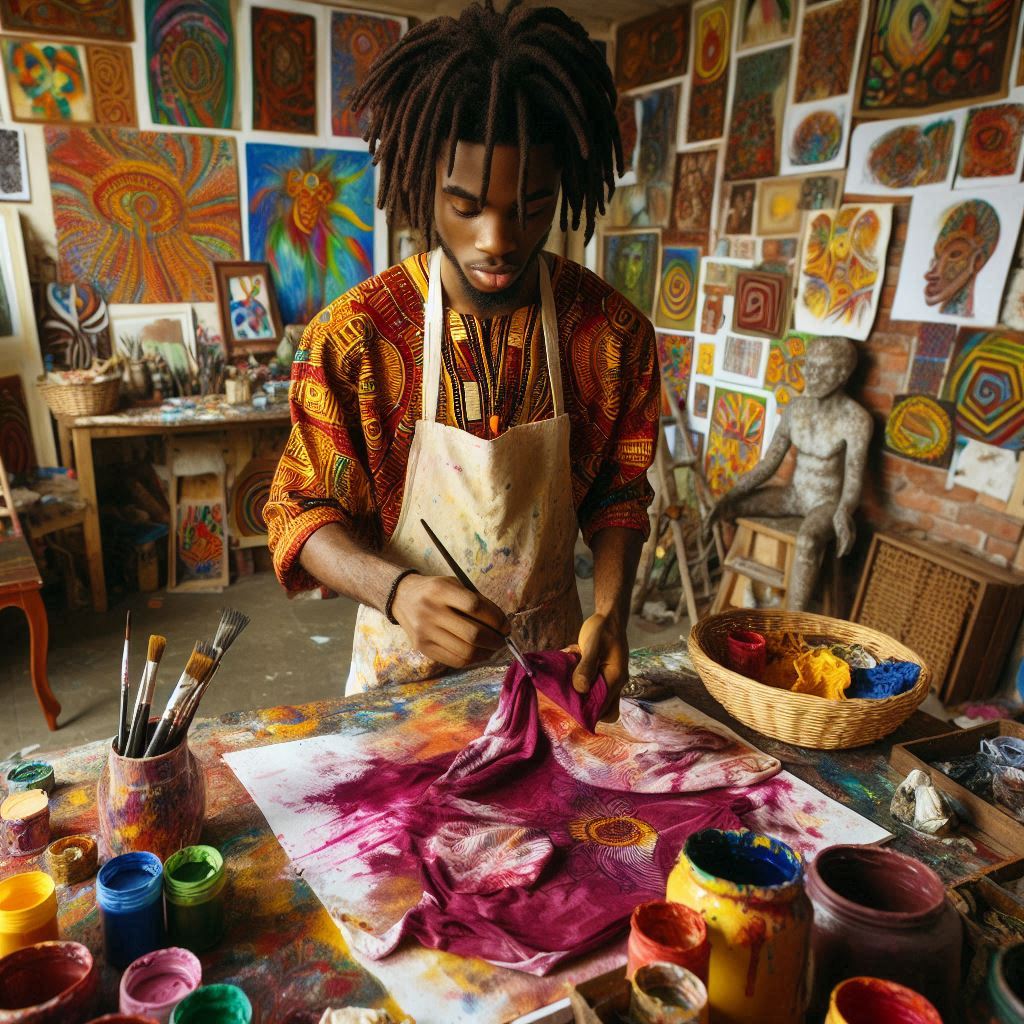Introduction
Sculpture and installations in Nigeria reflect the country’s rich cultural heritage and contemporary issues.
Traditional sculptures often depict deities, ancestors, and cultural symbols.
These artworks, made from wood, bronze, and terracotta, highlight Nigeria’s craftsmanship.
Modern Nigerian sculptors blend traditional techniques with contemporary styles, exploring themes of identity and transformation.
Installations, a newer art form in Nigeria, involve multiple elements and interactive components.
These large-scale works invite viewers to engage deeply with the artwork.
Nigerian artists use installations to address social and political issues, encouraging critical thinking about society.
Sculpture and installations preserve and celebrate Nigeria’s diverse heritage.
They foster a sense of identity and pride among Nigerians.
These art forms also offer a platform for social commentary, addressing issues like corruption and inequality.
They encourage public discourse and awareness.
Public sculptures and installations transform cityscapes, making them vibrant and engaging.
They create spaces for reflection and dialogue, fostering a sense of community and belonging.
These artworks significantly impact Nigerian culture and society.
By celebrating and critiquing their surroundings, Nigerian artists contribute to the nation’s identity and development.
Historical Overview
Nigeria has a long and diverse history of sculptural traditions dating back centuries.
The art of sculpture has been an integral part of Nigerian culture, serving various purposes from religious and spiritual to decorative and functional.
Ancient Nigerian civilizations such as the Nok culture, Ife kingdom, and Benin Empire are known for their intricate sculptures that have stood the test of time.
These sculptures were crafted from a variety of materials including bronze, terracotta, and wood.
Rich History of Sculptural Art
The art of sculpting in Nigeria has been passed down through generations, with each era adding its unique flair and style to the craft.
Nigerian sculptors are known for their attention to detail, precision, and creativity.
Sculptural art in Nigeria has evolved over time, incorporating influences from various cultures and traditions.
From realistic human figures to abstract sculptures, Nigerian artists have experimented with different styles and techniques, creating a diverse body of work.
Traditional Nigerian Sculptures
Traditional Nigerian sculptures encompass a wide range of themes and motifs, reflecting the country’s rich cultural heritage.
These sculptures are often inspired by legends, folklore, and historical events, capturing the essence of Nigerian life and tradition.
One of the most iconic Nigerian sculptures is the bronze heads of the Ife kingdom, known for their lifelike features and exquisite craftsmanship.
These sculptures serve as a testament to the artistic skill and technological prowess of ancient Nigerian artists.
In addition to bronze sculptures, Nigerian artists also specialize in terracotta and wood sculptures, each with its own unique charm and character.
Terracotta sculptures are known for their earthy tones and organic feel, while wood sculptures exhibit a warm and rustic aesthetic.
Significance of Traditional Nigerian Sculptures
Traditional Nigerian sculptures hold great significance within Nigerian society, serving as a link to the country’s past and a source of pride for its people.
These sculptures represent the cultural identity and artistic heritage of Nigeria, showcasing the creativity and craftsmanship of its artists.
Furthermore, traditional Nigerian sculptures play a crucial role in preserving and promoting Nigerian culture and heritage.
They serve as visual reminders of the country’s rich history and traditions, educating future generations about their roots and ancestry.
Most importantly, traditional Nigerian sculptures are not just objects of beauty but a reflection of Nigeria’s vibrant past and promising future.
They embody the spirit and creativity of Nigerian artists, capturing the essence of a nation that cherishes its heritage and values its artistic traditions.
Read: Digital Media Trends in Communication Arts
Contemporary Nigerian sculptors and their works
Profile of prominent Nigerian sculptors
El Anatsui
El Anatsui is a Ghanaian sculptor who has lived and worked in Nigeria for many years.
He is known for his large-scale sculptures made from discarded materials such as bottle caps and metal scraps.
Anatsui’s work often explores themes of reuse, transformation, and the environment.
His sculptures have been exhibited in major museums around the world, gaining him international acclaim.
Sokari Douglas Camp
Sokari Douglas Camp is a Nigerian-British sculptor known for her steel sculptures that often depict figures inspired by Nigerian culture and traditions. Her work is characterized by its dynamic and expressive forms, as well as its use of bold colors and textures.
Camp’s sculptures can be found in public spaces and galleries across Europe and Africa, showcasing the beauty and diversity of Nigerian art.
Ndidi Dike
Ndidi Dike is a Nigerian sculptor and installation artist whose work explores themes of identity, memory, and the social-political landscape of Nigeria.
Dike often incorporates found objects and traditional materials in her sculptures, creating powerful pieces that challenge the viewer to think critically about issues of race, gender, and power.
Her work has been exhibited internationally, shining a light on the complexities of Nigerian society.
Analysis of their unique styles and techniques in creating sculptures
Each of these Nigerian sculptors brings a distinct style and technique to their work, showcasing the diversity and innovation of Nigerian art.
El Anatsui
- Uses discarded materials like bottle caps and metal scraps
- Focuses on themes of reuse, transformation, and the environment
- Creates large-scale sculptures with intricate detailing
Sokari Douglas Camp
- Works primarily with steel to create dynamic sculptures
- Draws inspiration from Nigerian culture and traditions
- Uses bold colors and textures to add depth to her work
Ndidi Dike
- Incorporates found objects and traditional materials in her sculptures
- Explores themes of identity, memory, and social-political issues
- Challenges the viewer to think critically about race, gender, and power
Overall, these Nigerian sculptors are pushing boundaries and redefining the art world with their unique perspectives and innovative approaches to sculpture.
Read: Communication Arts: Job Prospects and Salaries
Significance of installations in Nigerian art scene
Installation art and its growing popularity in Nigeria
Installation art is a form of contemporary art that involves the creation of a three-dimensional environment in a specific space.
It can incorporate various elements such as sculpture, video, sound, and other multimedia components to engage the viewer in an immersive experience.
One of the reasons installations have become increasingly popular in the Nigerian art scene is their ability to address social, political, and cultural issues.
Artists use installations as a medium to express complex ideas and provoke critical thinking among viewers.
Furthermore, installations allow artists to break free from traditional artistic constraints and experiment with different materials, techniques, and concepts.
This form of art encourages creativity and innovation, pushing boundaries and challenging the status quo.
Examples of notable installation artists in Nigeria and their works
- Peju Alatise: Known for her thought-provoking installations that explore themes of identity, gender, and societal norms. One of her notable works is “Flying Girls,” which features suspended female figures soaring through the air, representing freedom and empowerment.
- Ndidi Dike: A multidisciplinary artist whose installations often incorporate found objects and recycled materials to create powerful visual narratives. Her work “Market Symphony” showcases a bustling market scene constructed from discarded plastic bottles, addressing issues of consumerism and environmental sustainability.
- Kelani Abass: A visual artist who combines traditional Yoruba motifs with contemporary elements in his installations. His piece “Iscariot’s Proposal” challenges viewers to reflect on betrayal and loyalty through a symbolic arrangement of objects and symbols.
- Jelili Atiku: A performance artist known for his immersive installations that address social justice and human rights issues. His work “Invisible Brides” sheds light on the plight of women forced into marriage against their will, creating a haunting and poignant visual representation of their struggles.
Read: Impact of Communication Arts on Nigerian Media
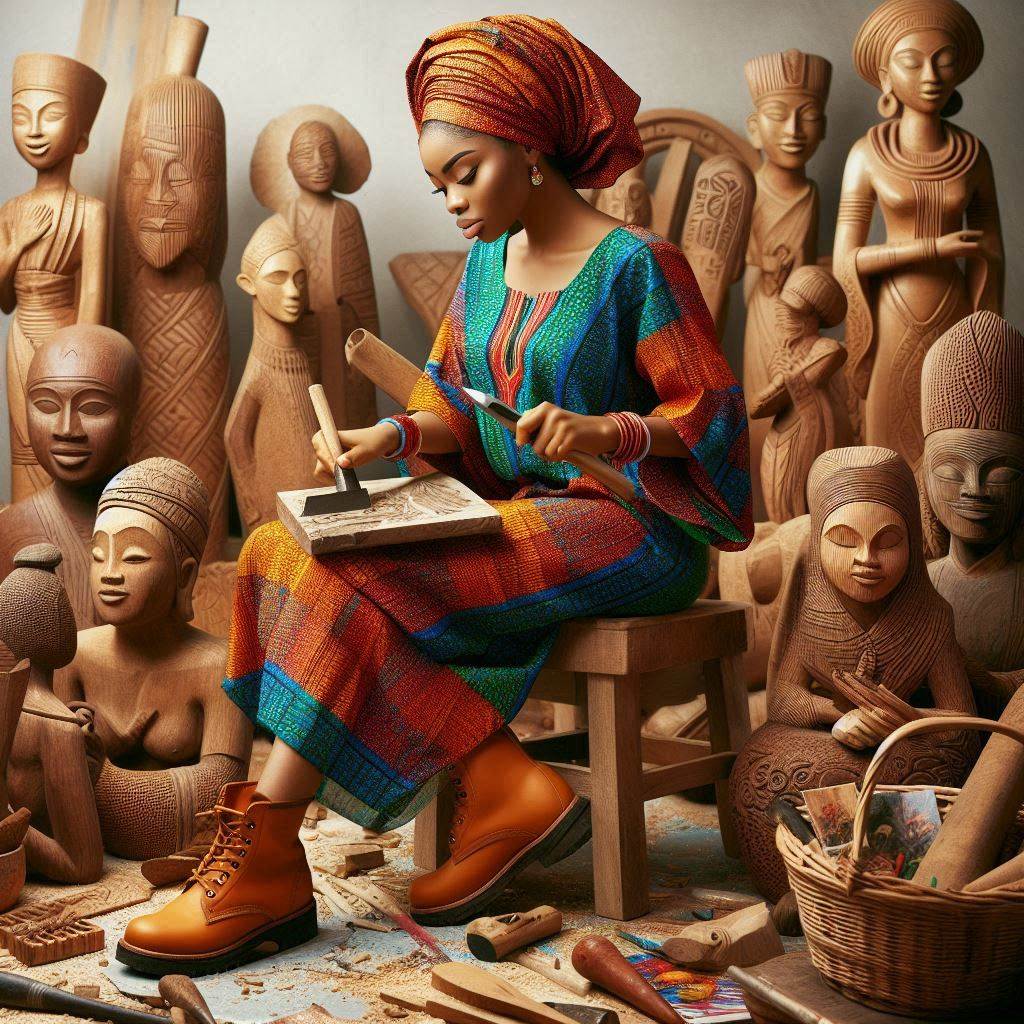
Exploration of common themes and concepts in Nigerian sculpture and installations
Exploration of common themes and concepts portrayed in Nigerian sculptures and installations
Nigerian sculptures and installations showcase a variety of themes and concepts that reflect the rich cultural heritage of the country.
These art forms serve as a means of expressing ideas, beliefs, and experiences unique to the Nigerian society.
Here are some common themes and concepts found in Nigerian sculpture and installations:
Cultural Identity
Many Nigerian artists use their work to explore and celebrate their cultural identity. This theme is often portrayed through the use of traditional symbols, motifs, and materials that are specific to Nigerian culture.
These artworks serve as a means of preserving and promoting the cultural heritage of the country.
Traditions and Rituals
Nigerian sculptures and installations often depict traditional practices, rituals, and ceremonies that are significant to the Nigerian society.
These artworks serve as a visual representation of the customs and beliefs that have been passed down through generations.
They also highlight the importance of tradition in Nigerian culture.
Social Issues
Many Nigerian artists use their sculptures and installations to address social issues such as political corruption, poverty, gender inequality, and environmental degradation.
These artworks serve as a form of social commentary, raising awareness and provoking thought about important issues affecting Nigerian society.
Spirituality and Mythology
Nigerian sculpture and installations often explore themes related to spirituality, mythology, and folklore.
These artworks draw inspiration from traditional Nigerian religion, folklore, and myths, creating a visual narrative that reflects the spiritual beliefs and cultural practices of the Nigerian people.
Nature and the Environment
Many Nigerian artists incorporate themes of nature and the environment in their sculptures and installations.
These artworks often depict the beauty of the Nigerian landscape, flora, and fauna, as well as raise awareness about environmental issues such as deforestation, pollution, and climate change.
They serve as a reminder of the importance of preserving the natural world for future generations.
How these themes reflect Nigerian culture, politics, and society
The themes and concepts portrayed in Nigerian sculpture and installations are deeply rooted in the country’s culture, politics, and society.
These artworks serve as a reflection of the values, beliefs, and experiences of the Nigerian people. Here is how these themes reflect Nigerian culture, politics, and society:
Influence of Nigerian Culture
The themes depicted in Nigerian sculptures and installations are heavily influenced by the country’s rich cultural heritage.
Artists draw inspiration from traditional Nigerian art, music, dance, and literature to create works that celebrate the cultural diversity of the country.
These artworks serve as a way of preserving and promoting Nigerian culture for future generations.
Political Commentary
Many Nigerian artists use their sculptures and installations as a form of political commentary. They address issues such as political corruption, governance, human rights, and social justice through their artworks.
These pieces serve as a powerful tool for expressing dissent, promoting awareness, and advocating for change in Nigerian society.
Social Critique
Nigerian sculptures and installations often serve as a critique of social issues such as poverty, inequality, and discrimination.
These artworks shed light on the everyday struggles faced by Nigerians and highlight the need for social reform and justice.
They serve as a reminder of the challenges faced by many Nigerians in their daily lives.
Cultural Revival
Nigerian artists use sculptures and installations as a means of cultural revival. These artworks celebrate traditional practices, rituals, and beliefs that are integral to Nigerian culture.
By showcasing these elements in their work, artists are able to preserve and promote the cultural heritage of the country for future generations.
Reflection of Society
The themes and concepts found in Nigerian sculpture and installations are a reflection of the society in which they are created.
These artworks capture the spirit, diversity, and complexity of Nigerian society, offering a glimpse into the lives, experiences, and aspirations of the Nigerian people.
They serve as a mirror that reflects the beauty, struggles, and resilience of Nigerian society.
Generally, Nigerian sculpture and installations are a powerful medium for exploring and expressing the themes and concepts that are important to the Nigerian society.
These artworks serve as a testament to the cultural richness, political complexities, and social dynamics of Nigeria, offering a unique insight into the country’s heritage and identity.
Read: Internship Opportunities for Communication Arts Students
Cultural influences on Nigerian sculpture and installations
Examination of how Nigerian cultural and historical influences shape the creation of sculptures and installations
Nigerian sculptures and installations are deeply influenced by the rich cultural and historical heritage of the country.
One of the key aspects of Nigerian culture that is reflected in sculptures and installations is the importance of storytelling.
Artists often use their works to narrate traditional folk tales and legends, preserving the oral history of the Nigerian people.
Traditional Nigerian religions such as Yoruba, Igbo, and Hausa also play a significant role in shaping the themes and motifs of Nigerian sculptures and installations.
Many artworks depict deities, spirits, and mythical creatures from these belief systems.
Moreover, the diversity of Nigerian ethnic groups contributes to the variety of styles and techniques found in Nigerian sculptures and installations.
Each group has its unique artistic traditions that are reflected in their artworks.
Additionally, historical events such as colonialism and the Nigerian civil war have had a profound impact on Nigerian art.
Artists often use their works to comment on social and political issues, reflecting the tumultuous history of the country.
Impact of globalization on contemporary Nigerian sculpture and installations
Globalization has brought both challenges and opportunities to the world of Nigerian sculptures and installations.
On the one hand, globalization has allowed Nigerian artists to gain exposure to international art movements and techniques.
This exchange of ideas has led to the incorporation of new materials and styles into Nigerian artworks.
However, globalization has also raised concerns about the preservation of traditional Nigerian art forms.
As Western influences seep into Nigerian art, there is a risk of losing the unique cultural identity that distinguishes Nigerian sculptures and installations.
Transform Your Career with Expert Guidance
Get personalized mentorship consulting that’s tailored to your unique path. Our expert advice is actionable and exclusive.
Get StartedDespite these challenges, many contemporary Nigerian artists are using globalization as a tool to reach a wider audience and engage with global art trends.
They are blending traditional Nigerian influences with modern artistic practices to create innovative and dynamic artworks.
Overall, Nigerian sculptures and installations are a reflection of the country’s vibrant cultural heritage and tumultuous history.
While globalization presents both opportunities and challenges, Nigerian artists continue to create artworks that celebrate their cultural identity and resonate with audiences around the world.
Challenges faced by Nigerian sculptors and installation artists
The Obstacles and Limitations Faced by Nigerian Artists in Creating and Showcasing Their Works
Nigerian artists face numerous obstacles in creating and showcasing their works.
These challenges hinder their ability to thrive in the art world.
Funding remains a significant issue.
Many artists struggle to secure financial support for their projects.
Limited access to grants and sponsorships exacerbates this problem.
Consequently, artists often finance their work independently.
Resources also pose a significant challenge.
Nigerian artists often lack access to quality materials and tools.
This limitation affects the quality and scope of their work.
Additionally, inadequate studio spaces constrain their creative processes.
Artists need conducive environments to produce large-scale sculptures and installations.
Without proper facilities, their potential is stifled.
Another challenge is the local art market’s underdevelopment.
Nigeria’s art market is still emerging, with limited infrastructure.
There are few established galleries and auction houses.
This scarcity of platforms makes it difficult for artists to reach potential buyers.
Moreover, the local audience often undervalues contemporary art.
Many Nigerians prefer traditional art forms, leaving modern sculptors and installation artists marginalized.
Art criticism and media coverage are also lacking.
Nigerian artists receive minimal critical analysis and media attention.
This lack of exposure affects their visibility and credibility.
Art critics play a crucial role in highlighting and promoting artists’ works.
Without this support, many talented artists remain unnoticed.
Government support for the arts is minimal.
Cultural policies often do not prioritize contemporary art forms.
There is a lack of investment in art infrastructure and initiatives.
This neglect affects artists’ ability to sustain their careers.
Additionally, bureaucratic hurdles can impede artists’ efforts to organize exhibitions and events.
Addressing Issues Such as Funding, Resources, and Recognition in the Art World
Despite these challenges, Nigerian artists continue to create and innovate. They often rely on community support and collaborations.
Social media has become a vital tool for promoting their work. Online platforms help artists reach a wider audience and gain recognition.
All in all, Nigerian artists face significant obstacles in creating and showcasing their works.
Issues such as funding, resources, and recognition impede their progress.
However, their resilience and creativity continue to drive the Nigerian art scene forward. By addressing these challenges, the art community can create a more supportive environment for artists.
This support will enable Nigerian artists to thrive and gain the recognition they deserve.
Conclusion
Sculpture and installations play a vital role in Nigerian art.
They reflect the country’s rich heritage and contemporary issues.
These art forms preserve cultural identity and foster pride among Nigerians.
They also address social and political concerns, prompting public discourse and awareness.
Despite numerous challenges, Nigerian artists continue to innovate and create impactful work.
Their resilience and creativity deserve recognition and support from both local and international communities.
We must appreciate and promote Nigerian sculptors and installation artists.
Supporting them will enhance the art community and enrich Nigeria’s cultural landscape.
Invest in their work, attend exhibitions, and share their stories.
By doing so, we can ensure Nigerian art thrives and gains global recognition.
Educational institutions should also include these art forms in their curricula to nurture young talents.
Your support can make a significant difference.
Celebrate and champion Nigerian artists today to contribute to the flourishing of Nigeria’s vibrant art scene.

